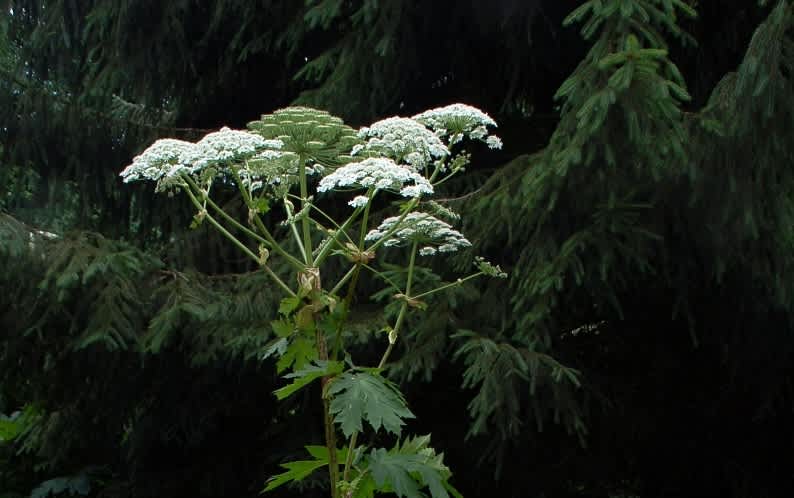Invasive Plant That Causes Permanent Blindness Discovered in Michigan
OutdoorHub Reporters 08.05.15

Merely touching this nonnative plant will give you blisters and long-lasting scars, but if you are unfortunate enough to rub some of its sap in your eyes, you will go blind—permanently. It is called the giant hogweed, and it is considered an extreme public health hazard. Officials in Calhoun County, Michigan are warning residents to avoid and report any sightings of the plant after a giant hogweed was discovered near Battle Creek. The plant has since been removed from the area, but health officials fear that more may be nearby.
“It’s not deadly but it can certainly cause you an awful lot of discomfort,” Paul Makoski, Calhoun County’s Environmental Health Director, told WWMT.
The giant hogweed is not native to North America. It was originally transported to Michigan and other states in the early twentieth century for use as an ornamental plant due to its unique shape and large size.
The plants can now occasionally be found growing in the wild, landing it a place on the Federal Noxious Weeds List. What makes it so dangerous is that the plant secretes a sap that can cause a condition called phytophotodermatitis. After coming into contact with the sap, the skin will start blistering when exposed to sunlight, leaving marks that last for months or resulting in permanent scars. Rubbing the sap into the eyes can cause blindness.
The effects of hogweed sap are sometimes described as similar to a chemical burn. You can see what it looks like below. Images might be graphic.
“The weed can be especially troublesome for children that may find the long stems attractive to play with,” stated the Michigan Department of Agriculture and Rural Development (MDARD). “If you do come into contact with the plant, and especially the sap, you are advised to wash the affected areas immediately, keep the exposed area out of direct sunlight and seek medical advice.”
Giant hogweed is now suspected to exist in several other Michigan counties and in pockets across the United States and Canada. The adaptable plant can also be found in Europe, Australia. and New Zealand. Originally from Central Asia, giant hogweed can spread quickly because all it takes is a single plant to form a colony. The plants reproduce through both far-ranging seeds and shoots from their roots, giving the giant hogweed the ability to both populate one local area or spread its offspring across a wider range.
“Weed specialists have reported that once it becomes established, it takes up to five years to completely eradicate a colony due to regrowth from seeds and roots,” MDARD stated.
Experts said the plant prefers wetlands and areas around waterways. It can grow between six to 18 feet high and is marked by red or purple spots on the stem. Its flower can often be mistaken for the far more benign Queen Anne’s lace. Giant hogweed is also commonly mistaken for cow parsnip, another plant which causes similar, but less serious, effects.
The plant is currently not common enough to be a major threat to outdoor enthusiasts. Michigan officials say that if you do spot one in the wild, do not attempt to remove it yourself, and inform the proper authorities.
“It’s fairly easy to eradicate once you figure out what it is but if you try to cut it down and you don’t know what you’re doing, it’s going to hurt you,” said Bob Coward, the gardener who discovered the plant in Calhoun County.

